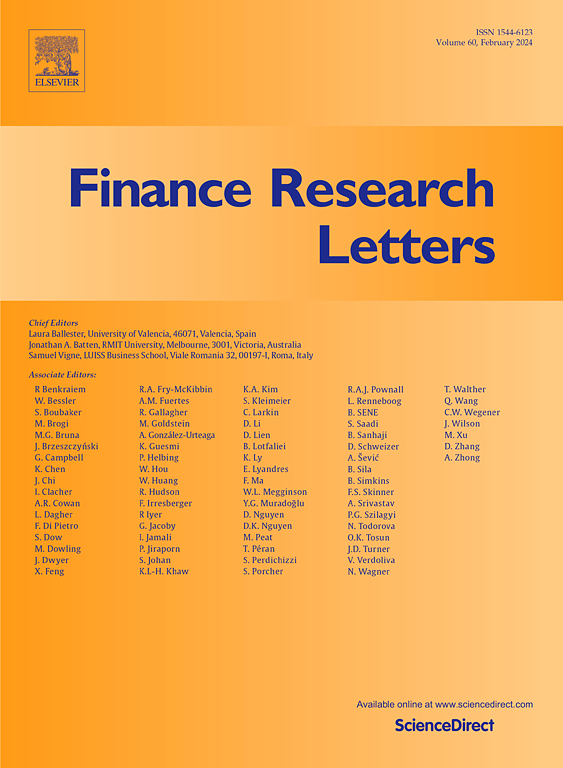避险货币:依赖转换的联结方法
IF 6.9
2区 经济学
Q1 BUSINESS, FINANCE
引用次数: 0
摘要
本文提出了一种独特的方法来研究五种主要货币的避险属性:美元、日元、瑞士法郎、欧元和英镑。与其他研究不同,我们采用灵活的依赖转换联结模型来检验这些货币与全球市场风险之间的联合尾部依赖关系。这种创新的方法使我们能够在最相关的时候直接衡量避险货币的强弱。利用1999年至2024年的日常数据,我们的实证结果表明,在全球风险厌恶情绪加剧的时期,美元仍然是一种避险货币。此外,即使在美元升值的情况下,日元的避险行为依然存在。瑞郎表现出避险的特征,尽管没有美元那么明显,而欧元和英镑表现出最弱的避险行为。此外,我们发现,一种货币的避险地位会随着时间的推移而波动,在全球市场重大动荡时期,美元是最强劲的避险货币。本文章由计算机程序翻译,如有差异,请以英文原文为准。
Safe haven currencies: A dependence-switching copula approach
This paper presents a unique approach to investigating the safe haven properties of five major currencies: the US dollar, the Japanese yen, the Swiss franc, the euro, and the British pound. Unlike other studies, we employ a flexible dependence-switching copula model to examine the joint tail dependence between these currencies and global market risk. This innovative method allows us to directly measure the strength of safe haven currencies when they are most relevant. Using daily data from 1999 to 2024, our empirical results show that the US dollar remains a safe haven currency during periods of heightened global risk aversion. Moreover, the safe haven behavior of the yen persists even in the presence of the US dollar’s appreciation. The Swiss franc exhibits safe haven characteristics, albeit less pronounced than the US dollar, and the euro and the pound demonstrate the weakest safe haven behavior. In addition, we find that the safe haven status of a currency fluctuates over time, with the US dollar being the strongest safe haven currency during periods of major global market turmoil.
求助全文
通过发布文献求助,成功后即可免费获取论文全文。
去求助
来源期刊

Finance Research Letters
BUSINESS, FINANCE-
CiteScore
11.10
自引率
14.40%
发文量
863
期刊介绍:
Finance Research Letters welcomes submissions across all areas of finance, aiming for rapid publication of significant new findings. The journal particularly encourages papers that provide insight into the replicability of established results, examine the cross-national applicability of previous findings, challenge existing methodologies, or demonstrate methodological contingencies.
Papers are invited in the following areas:
Actuarial studies
Alternative investments
Asset Pricing
Bankruptcy and liquidation
Banks and other Depository Institutions
Behavioral and experimental finance
Bibliometric and Scientometric studies of finance
Capital budgeting and corporate investment
Capital markets and accounting
Capital structure and payout policy
Commodities
Contagion, crises and interdependence
Corporate governance
Credit and fixed income markets and instruments
Derivatives
Emerging markets
Energy Finance and Energy Markets
Financial Econometrics
Financial History
Financial intermediation and money markets
Financial markets and marketplaces
Financial Mathematics and Econophysics
Financial Regulation and Law
Forecasting
Frontier market studies
International Finance
Market efficiency, event studies
Mergers, acquisitions and the market for corporate control
Micro Finance Institutions
Microstructure
Non-bank Financial Institutions
Personal Finance
Portfolio choice and investing
Real estate finance and investing
Risk
SME, Family and Entrepreneurial Finance
 求助内容:
求助内容: 应助结果提醒方式:
应助结果提醒方式:


